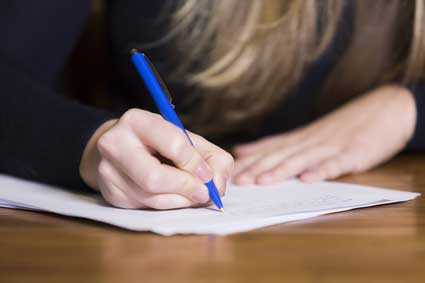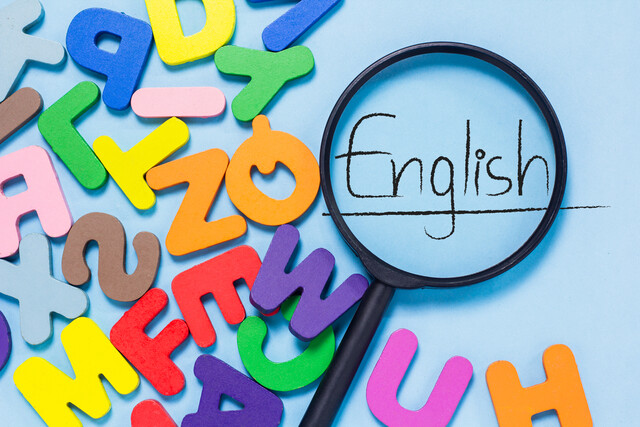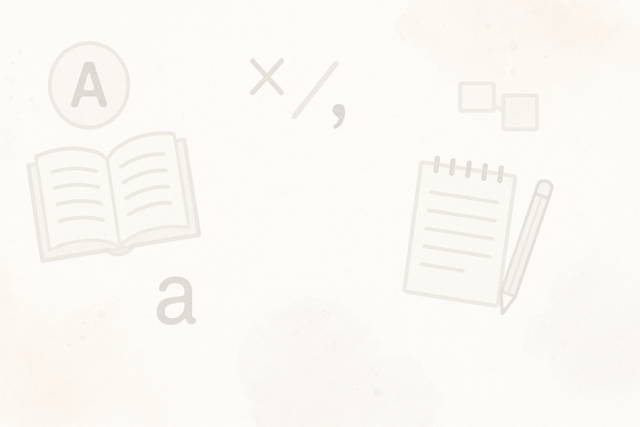How to Teach English "To Have" and "Have Got" to ESL Students
There are special considerations that come up when you introduce to have in the present simple, which always follows soon after a classroom lesson on to be in the present simple.
The differences
A classroom lesson on only to have in the present simple is an occasion to introduce the negative forms don't and doesn't as well as question forms with do and does.
However, with have got we say the negative as "I haven't got" and "she hasn't got" (etc.) and ask questions same question by saying "have you got.?" and "has she got.?" etc.
Both to have and have got are common, but have got is consider informal and is used in British English twice as often as in American English.
Have got is used when speaking about possession. We use it to say "I have got a new car," but we don't use it to say "I have breakfast at 8" or "we have fun."
When to teach them
In an absolute beginner class, you might separate to have and to have got into separate classes.
That way you can introduce the do and does question forms without confusion, which will lead to classes on using do/does with all other verbs: Do you like, does he make, etc. Then you would introduce have got soon after.
In a higher level class, to have and have got can be taught together.
The lesson plan below presents both "to have" and "to have got" and is designed to follow a class on "to have."
Lesson plan
Classroom Objectives:
Understanding the verb "to have got" in a text.
Describing what is in an office.
Vocabulary: a desk, a lamp, a chair, a printer, a window,
a clock, a plant, a bookshelf, a picture
Presentation
You would present the vocabulary with the techniques we have discussed. This would be a good chance to use realia.
Use the board and the techniques we have covered to present:
POSSESSION
"have" = "have got"
I have a car. = I have got a car.
She has a car. = She's got a car.
I don't have a car = I haven't got a car.
He doesn't have a car = He hasn't got a car.
NON-POSSESSION
We have fun = ---
Then use your techniques via boardwork or a handout to present "have got" as opposed to "to have."
I have I have got I've got
You have You have got You've got
He has He has got He's got
She has She has got She's got
It has It has got It's got
We have We have got We've got
You have You have got You've got
They have They have got They've got
-
I don't have I have not got I haven't got
You don't have You have not got You haven't got
He doesn't have He has not got He hasn't got
She doesn't have She has not got She hasn't got
It doesn't have It has not got It hasn't got
We don't have We have not got We haven't got
You don't have You have not got You haven't got
They don't have They have not got They haven't got
-
Do I have? Have I got?
Do you have Have you got?
Does he have? Has he got?
Does she have? Has she got?
Does it have? Has it got?
Do we have? Have we got?
Do you have? Have you got?
Do they have? Have they got?
Practice
In this first exercise, the students are reminded of "have" and learn the alternative "have got." Present with the example etc. with the techniques we have covered:
Practice 1:
Fill in the blank with the correct form of the verb "have" and then "have got".
Examples:
We _______ a plant in the office. We _______ a plant.
We have a plant in the office. We have got a plant.
No, he ________ a chair in his office.
No, he hasn't got a chair in his office.
1. He _____________________ a computer. He _____________________ a computer.
2. No, they ____________________ a window. No, they _________________ a window.
3. We ______________ two lamps. We _____________________ two lamps.
4. No, I _______________________ any plants. No, I ___________________ any plants.
5. She ____________________ three pictures. She __________________ three pictures.
6. No, we _________________ a clock. No, we _________________ a clock.
7. No, he _________________ a printer in his office. No, he ________________ a printer in his office.
8. They ______________ books on their bookshelves. They __________________ books on their bookshelves.
Practice 3
Use "have got" in the questions.
Examples:
Do you have a computer? Have you got a computer?
1. Does she have a chair? ______________ she ________________ a chair?
2. Do they have a desk? ______________ they ________________a desk?
3. Do you have pictures? ______________ you ________________ pictures?
4. Do I have a desk? ______________ I ________________ a desk?
5. Do you have a printer? ______________ you ________________ a printer?
6. Do we have a clock? ______________ we ________________ a clock?
7. Does the office have a desk? ______________ the office ________________ a desk?
Practice 4
Provide a handout and have the students read the dialogue out loud, repeating after you. An alternative would be to provide the text with blanks for the students to fill in, or to have students answers a question on the board the first time they listen.
A manager is showing the office to a new employee, Maria.
Manager: Here is your new office. You have a desk with a lamp and a telephone.
Maria: Have I got a printer?
Manager: You don't have a printer. The printer is in my office. You've got two big windows, a bookshelf and a nice plant. You've got two chairs.
Maria: Have we got any pictures for the wall?
Manager: We haven't got any pictures for you, but you have a big clock.
Practice 5
This is a verbal exercise led by the teacher which prepares the students for the Production by having the students ask and answer questions.
Though the steps are described in detail, the exercise should be done quickly.
For this exercise, use a picture of an office with a woman in it, or draw a simple picture on the board of an office with some (but not all) of the words from the vocabulary in it.
Write "have" and "have got" on the board if they are not there already from your presentation.
First you would review "have."
Model the exercise by pointing to the drawing of the woman and then an object (for example, a clock) in the drawing.
Point to "have" and say "She has a clock," having the students repeat several times.
Then point to the women and another object (for example, a chair) and "have" and prompt the students. See if they can say "She has a chair" without you saying it first. If not, say it and have them repeat.
Continue with the objects until the students are offering the sentences on their own.
Then repeat with individual students.
Next, look at the board and indicate an object that is not in the picture. For example, a plant. Say "A chair?"
See if anyone says "She doesn't have a chair" or give the sentence to them. Continue as above with other objects that are not in the picture.
Then you would do the same with "have got," getting the students to say "She has got a clock" and then "She hasn't got a plant."
Now continue in the same way as above but with questions. "Has she got.?" and having the students answer both in the affirmative and negative.
Then use the halving techniques to have half the class ask the question "Has she got.?" and half answer, pointing to an object. Then continue with negative answers by calling out the objects that are not in the picture.
Then use open pairs to have two students at a time ask and answer the same way.
Production
Part 1:
Use two different handouts pictures of offices. Put the student into pairs and give each student in the pair a different picture. You could also draw another office picture to go along with the one you have already on the board. Model that the students ask and answer:
Have you got a clock in your office?
Yes, I've got a clock / No, I haven't got a clock.
Part 2:
In their pairs, have the student ask and answer questions about their family and possessions. Use a handout and model the exercise:
Have you got a brother / sister? (or name a friend or their husband or wife)
Then:
Has he / she got. a car?
a mobile phone?
an office?
a dog?
a cat?
a house?
an apartment?
plants at home?
a job?
many clothes?
many shoes?
a hat?
a computer?
a printer?
More activities
Here are some more activity ideas. Some of them could be used in place of the exercises in the lesson plan.
-Go Fish. This well-known card game can be adapted so that students have to ask "Have you got..?" and "Yes I have got." and "No, I haven't got."
To use this game, you would either have to teach the suits and king, queen, ace etc. Students would also have to know their numbers up to 10.
-Guessing game: This would be for a higher level class with students who know a good bit of basic vocabulary.
Hand out images to the pairs of students, either on cards or several images together on a handout, with different images for each person in the pair.
The first student has to describe the image while the other tries to guess what it is. This could also be used to review to be in the present simple along with have got. For example:
(picture of a car)
It has got four wheels.
(a forest)
It has got many trees.
(a computer)
It has got a screen. It has got a keyboard.
-Make them say no: This game is fun. The first version is for a very short (five minute) exercise. The object is to make the other student say "No, I haven't got."
So students take turns asking questions they think up themselves, like "Have you got an airplane? Have you got five dogs?
The student loses the game by asking a question that gets a yes answer.
A longer version of this game is to give each student a different list of things, or things listed on cards, that they have to follow in order. The lists have things that students probably haven't got, but a few that they might have. Students get points when they can answer "yes, I've got a."
So the list would look something like this: a plane, more than two dogs, more than two cats, three mobile phones, a BMW, a motorcycle, a crocodile, a pet bird, a horse, a million dollars, more than three brothers, more than three sisters, a gold ring, a family member in another country, etc.
-Things at home: In this activities, students in pairs ask about each other's home. It could be combined with a lesson on vocabulary involving houses, rooms, furniture, etc. For example:
The kitchen:
Have you got a table in the kitchen?
Have you got four chairs? Have you got five chairs?
Have you got a microwave?
The living room:
Have you got a TV in the living room?
Have you got a sofa? Have you got two sofas?
The bedroom:
Have you got one bed or two beds?
Have you got clothes in the bedroom?
Have you got many shoes?
This could be expanded to ask about any and all possessions:
Have you got a dog?
Have you got a car?
-Using a song: "My Girl" by the Temptations is a good song for teaching "have got." It has the following lines that use "have got":
I've got sunshine on a cloudy day
When it's cold outside I've got the month of May
I've got so much honey the bees envy me
I've got a sweeter song than the birds in the trees
I've got all the riches baby one man can claim
I've got sunshine on a cloudy day
I've even got the month of May
Using a song usually involves designing a whole lesson plan around it. In Lesson 20, you will learn all the steps for using a song in a classroom lesson.



















